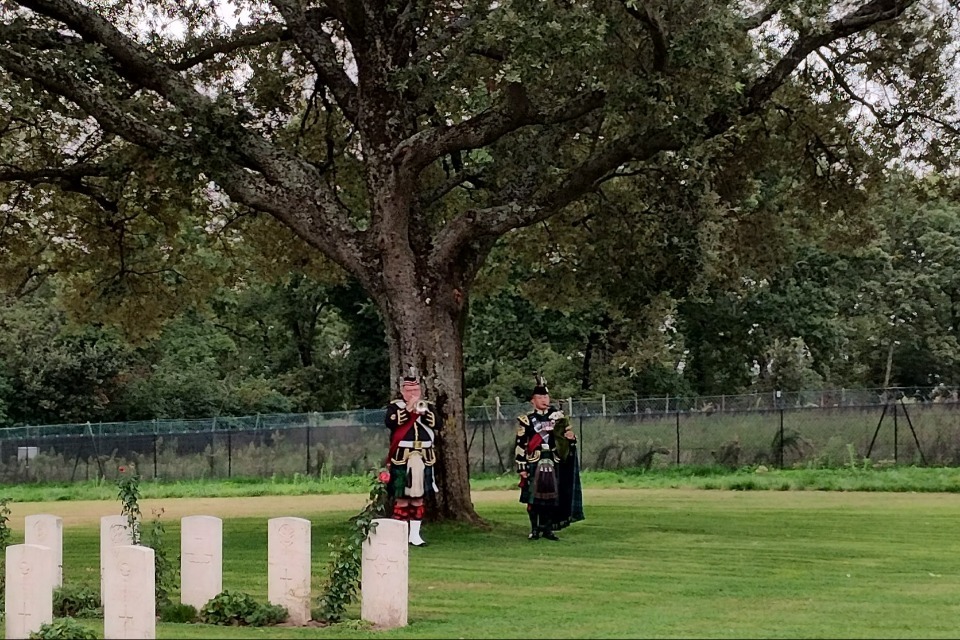Today’s service for Private (Pte) George Alister Walker Ewan was organised by the MOD’s Joint Casualty and Compassionate Centre (JCCC), also known as the ‘War Detectives’.
The service was held at the Commonwealth War Graves Commission’s (CWGC) Bolsena War Cemetery in Italy.
George Alister Walker Ewan was born in Edmonton, Alberta, Canada in 1915 to Scottish parents Thomas Ewan, a farmer, and his wife Christina Walker Alister. George was their second, and youngest child – having a sister called Catherine, who was five years older than him.
The family returned to Scotland in the summer of 1916, living initially in Dollar with Thomas’ mother. Sadly, Christina died in 1919 and following this the family were separated for a time with George and Catherine living away from their father.
George Ewan joined the army in June 1940 and spent two years on home defence duties with a Territorial battalion of the Argyll and Sutherland Highlanders. In late 1941 he was transferred to the 8th Battalion and embarked with them for North Africa in October 1942. He was posted as missing in November 1942 during the second battle of El Alamein but was able to rejoin his battalion a few weeks later.
Padre David Anderson leads the service for Pte George Ewan at Bolsena War Cemetery (Crown Copyright)
Pte Ewan was wounded in an action in the Vaiano area in late June 1944, he was initially posted as missing, but this was later revised to record that he was presumed to have died of his wounds on or soon after 21 June 1944. He was buried at the civilian cemetery at Castiglione del Largo, possibly by the German army or by local civilians though the records are not clear. Either way, his name was not recorded, and he was listed in the cemetery records as an unknown British soldier.
Following the war, his remains were recovered from Castiglione del Largo and moved to the war cemetery at Bolsena, his cap badge showed that he had been a member of the Argyll & Sutherland Highlanders, but no other identifying artefacts were found.
Recently an independent researcher submitted evidence to the CWGC hoping to have located the final resting place of Pte Ewan. This research was reviewed, and extra work was conducted by the National Army Museum and the JCCC which concluded that now, 80 years after his death, it was possible to clearly identify where Pte Ewan was buried and notify his family that he had been found. Pte Ewan’s cousins were in attendance at the service.

Pte Ewan’s cousins stand at his graveside with members of the military party (Crown Copyright)
JCCC Caseworker, Alexia Clark, said:
I am grateful to the researcher who submitted this case. Their work has led us to recognise the final resting place of Pte Ewan, to restore his name to him and to allow his family to honour his sacrifice. It has been a privilege for me to have contributed to this case and to have organised the service for the rededication of Pte Ewan’s grave today.
Director for Central and Southern Europe at the CWGC, Geert Bekaert, said:
We are grateful to everyone involved in identifying the grave of this brave soldier, who died 80 years ago today. It is our duty – and privilege – to care for the grave of Private Ewan, in perpetuity.

